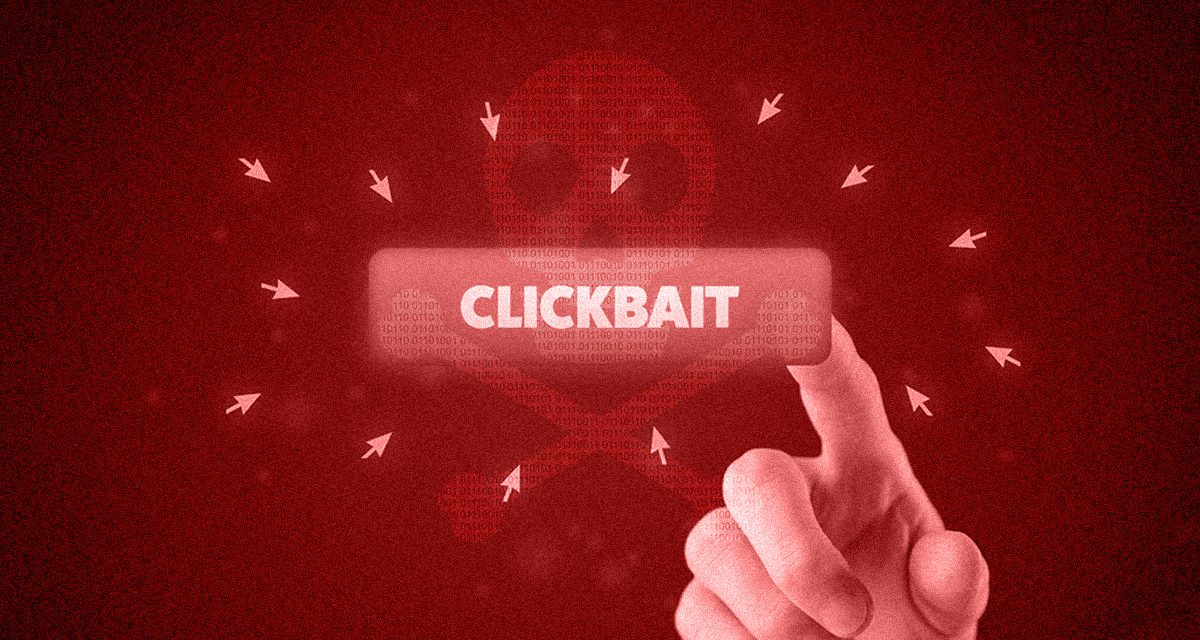Beware: Clickbait advertorials and “content discovery” feeds have been implicated in an increasing number of deepfake scam ad campaigns for years.
Two years ago, CybersecAsia.net ran a feature summarizing how insidious clickbait content feeds are, and why legitimate news, media and marketing agencies should avoid partnering them.
Now, two years later, the situation has not improved, and (generative) AI has probably a big part in this negative trend. This writer recently came across three different scam advertisements in news websites in Singapore, the USA and India. Guess what section the scam ads appeared on. The “Elsewhere on the Web” or “Other stories you may be interested in” sections, of course.
The “sizzling-hot” content is usually provided by the usual suspects in clickbait “content discovery (as described by Strikepoint and other marketing firms”, of course. Irresistibly catchy or naughty headlines accompanied by usually misleading visuals never fail to capture clicks and click-throughs.
The worst part is, the host websites typically do not make it easy for sharp-eyed visitors to report the scam ads. And the clickbait content stream apparently now rotates the scam ads with non-scam content to make it difficult for the host website administrator to perform forensics in response to complaints.
Finally, no accountability was forthcoming from the host websites. The offending clickbait deepfake ads were subsequently removed, but I did not receive any acknowledgement of my tipoff, or any constructive reply, for that matter. So much for corporate accountability and genuineness.
Accomplices to cyber crime
Suppose an established content provider features a clickbait content feed to obtain better readership figures and whatever perceived benefits associated with hosting such “interesting” content.
Later, without its knowledge, one of the ads or advertorials in the clickbait content turns out to feature deepfake content of Singapore’s Prime Minister or some other celebrity touting some dubious crypto investment scheme that eventually causes dozens of victims to lose millions of dollars.
When government cybersecurity agencies are notified, they not only take the clickbait content provider to task, but also the main content provider for poor diligence in managing its third-party content. Will this reflect well on all and any website that also use the same clickbait content provider? Do such websites proclaim innocence as they are not in control of what the clickbait feeds send to site visitors?
By being implicated in a third-party content provider’s negligence, does it not cast a dismal pall on a host website? Arguably, some smaller content-business leaders may even have “closed one eye” to the shenanigans of their third-party clickbait provider all along — until a massive scam goes out of control of even the clickbait aggregation firm. This is reminiscent of supply-chain vulnerabilities in cybersecurity and ransomware incidents.
In the worst-case scenario, a firm found to have been negligent in managing and self-censoring its website contents that have led to cyber incidents and scams can be considered an accomplice to the crime of the actual cybercriminals and clickbait content hosts. What does being viewed as engaging in actionable complicity in cybercrime by consumers do to any reputable brand and its partners? The answer is obvious.
Risks of partnering clickbait content providers
Despite the desperation or ignorance of website content managers to meet KPIs and resorting to clickbait providers, the risks involved are growing exponentially in tandem with the use of AI in generating deepfake advertising scams and fake news.
While governments are tightening personal data privacy and fake news laws, they have yet to set their sights on clickbait operators and cybercriminals linked to such threat vectors in any major way.
So, other than the obvious benefits of partnering clickbait content providers, what are the major risks and potential brand damage?
-
Reputational damage
- Low-quality content: These platforms often promote low-quality, misleading, or sensationalist content. Associating with such content can tarnish a brand’s reputation.
- Negative consumer perceptions: Users may perceive the partnering brand as endorsing or supporting clickbait, leading to a loss of trust and credibility. This distrust is exponentially amplified when a major scam is uncovered and attributed to a clickbait content provider and the website that hosted its advertorials. With social media reach, the distrust can spread to encompass all websites and products associated the brands and industry implicated in the scam.
-
Ad fraud and invalid traffic
- Bot traffic: Clickbait content often attracts non-human traffic (bots), leading to inflated metrics and wasted ad spend.
- Misleading metrics: The performance metrics from clickbait campaigns can be deceptive, showing high engagement but low-quality leads or conversions.
-
User experience degradation
- Annoying ads: Clickbait ads can be intrusive and disrupt the user experience, leading to user dissatisfaction and potentially driving users away from the platform.
- Misleading content: Users who click on these ads and advertorials expecting valuable content may feel deceived, resulting in a negative user experience.
-
Brand safety concerns
- Inappropriate content: Clickbait platforms may display ads next to inappropriate or offensive content, which can reflect poorly on the brand.
- Lack of control: Brands often have limited control over where the clickbait content and ads appear, increasing the risk of being associated with unsuitable content. As this writer has just discovered, scams, fake news, dis/mis-information and exaggerated claims are now rotated so that the same story headline may link to the actual scam at a certain time, and at another time, link to a similar story with offending materials absent.
-
Regulatory and compliance issues
- False advertising: Promoting clickbait content can lead to regulatory scrutiny and potential legal issues related to false advertising and consumer protection laws.
- Data privacy: Some content-feed providers with a poor history of responsible marketing may not comply with stringent data privacy regulations, posing risks related to data breaches and non-compliance fines to their partner host sites.
-
Poor or masked outcomes
- Low-quality leads: Clickbait content often attracts users with low purchase intent, resulting in poor conversion rates and low return on investment.
- High bounce rates: Users who realize they have been misled are likely to leave the site quickly, leading to high bounce rates and low engagement. Through social media, they can share their bad experiences to warn many others to avoid the main website that hosts such contentious “content discovery” materials. Some legitimate media content websites actually allow clickbait content providers to use the former’s quality content in clickbait feeds. This helps to dilute some of the bad rep of clickbait feeds, but the websites allowing their materials to be used “around the Web” may one day find the scheme backfiring.
-
Negative impact on Search Engine Optimization (SEO)
- Decreased trust signals: Search engines may penalize sites that frequently host clickbait content or ads, impacting organic search rankings..
- Poor user signals: High bounce rates and low dwell time can negatively affect SEO performance, as search engines interpret these as signals of low-quality content.
Mitigation strategies
By carefully considering the above risks and implementing appropriate safeguards, content managers and associated professionals in marketing, communication, public relations and brand consultancy can make more informed decisions about partnering with clickbait content-feed providers.
If any website or social media property still chooses to partner with clickbait content providers, it will need to mitigate the abovementioned risks:
- Set clear guidelines: Establish clear guidelines and expectations for the type of content promoted by third party content partners, and what the latter do with your own content in any “content-sharing” arrangements.
- Thoroughly vet third party content feed providers: Ensure they adhere to high-quality standards, and align with your brand’s mission, values and sense of corporate integrity.
- Use brand safety tools: Implement tools and strategies to monitor and control where ads appear, the actual quality and credibility of the content, and also provide transparent and easy channels for visitors to report anomalies.
- Focus on quality over quantity: Prioritize quality traffic and user engagement over sheer volume.
Finally, when cybersecurity, fraud management and self-censoring best practices are left to market forces in a digital-fragmented world, lapses have a way of surfacing; or worse — they remain as latent fault lines waiting to erupt in tandem with malicious criminal activities. This is where concerted governmental oversight and collaborations across geographical boundaries have to come in preemptively.

















